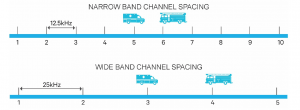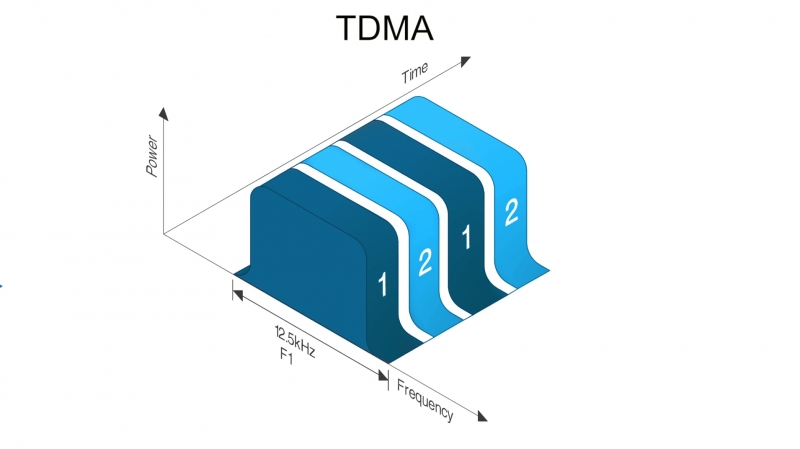Introduction to P25
Channel Operation and Configuration
Physical and Logical Channels
One topic that often causes confusion in digital radio networks is the difference between physical and logical channels.
Physical Channels
A physical radio channel is a radio frequency or pair of frequencies that is allocated by the regulatory body to an agency for communication. Simply put, this means in direct radio to radio communication the same frequency may be used for reception and transmission.
Where repeaters are used, a pair of frequencies make up the radio channel; one frequency for transmitting into the repeater, and another frequency for receiving from the repeater. This pair of frequencies is still one radio channel.
Traditional radio channels would carry one voice call (one person talking) per transmission, and this remains true of P25 Phase 1. The voice from the talker is converted into digital data and constantly streamed on the channel as a digital data stream. If the system had the capacity to allow different teams to talk at the same time, a second physical channel would be required.
 In cities where there is a necessity for a large number of critical group users sharing the same network, sites need to have the capacity for all these groups of teams to be able to use the radio system simultaneously. This can quickly use up all the available channels in that area.
In cities where there is a necessity for a large number of critical group users sharing the same network, sites need to have the capacity for all these groups of teams to be able to use the radio system simultaneously. This can quickly use up all the available channels in that area.
If there are more user groups are assigned to the radio network than there are physical channels, most of the time a trunked radio network will work well. As the system gets busier and there are many groups making calls simultaneously, there will be occasions where users must wait for channel availability before the radio system can be accessed.
Logical Channels
Many digital radio standards use a technique called Time Division Multiple Access (TDMA).
The physical channel is divided into two or more logical channels using time slots, allowing TDMA radio channels to carry more than one call at the same time. P25 Phase 2 uses two time slots. The voice from one talker is converted into digital, but the data is transmitted in only one of the two time slots. At the receiving end, the data is received in that time slot, and the original voice is recreated.
The second time slot, or logical channel, is still free to carry a different conversation. A call from another team can be allocated to the same physical channel, but use the second time slot. The ability of each physical channel to be split into two logical channels doubles the capacity of the radio system. This allows a greater number of groups to share the same radio network, and still all talk at the same time.
In summary, a physical radio channel is the frequency or frequency pair allocated by the regulatory body. In P25 Phase 1, a physical channel and logical channel are the same thing. In P25 Phase 2, a physical channel is divided into two time slots or logical channels. Each time slot can carry an independent call. This increases the capacity of the radio network.
 Radio Academy
Radio Academy






